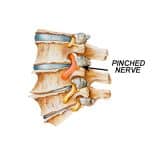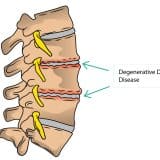Cervical Spondylosis: Symptoms and Treatment

As we age, our bodies, that is, bones and muscles, degenerate with time. The main reason for this is the constant wear and tear that happens due to extensive body stress and work, with lesser rest hours. One of the most common problems people face due to constant wear and tear is cervical spondylosis.
Cervical spondylosis is where the spinal disks of the cervical region shrink and dehydrate. These are the classic signs of osteoporosis, which leads to weakening of bones and muscles in nearby areas.
Symptoms of cervical spondylosis
Cervical spondylosis is a typical result of body deterioration. It is essential to have a diagnosis at the earliest to receive faster treatment and prevent further decline. As most nerves pass through the cervical region, the effects of this condition are felt in other parts of the body. Here are some of the common symptoms of cervical spondylosis:
Sensation in the extremities
Most nerves passing through the spinal region reach the extremities, that is, hands, feet, and fingers. The immediate effects of cervical spondylosis are seen in the fingers and hands. Patients often feel a tingling or numbing sensation. Feeling of weakness in the extremities is also familiar.
Lack of coordination
In the case of cervical spondylosis, many nerves going down the spine get compressed. This often leads to lack of coordination. The patients often feel dizzy while walking or walking in a straight line.
Loss of control of bowel or urinary movement
The uterine and rectal muscles hold the urine and stool, respectively, within the body. If these muscles lose neural coordination, they often lose control over their movements. As a result, patients often feel the urgent need to visit the washroom frequently.
Treatment of cervical spondylosis
The treatment protocol for cervical spondylosis dramatically depends on the condition of the disease, the intensity at which it is spreading, and the symptoms of the patients and their age. Here are some of the commonly adopted treatment modalities for cervical spondylosis:
NSAIDs
These drugs, that are non steroidal anti inflammatory drugs, are the first line of action for cervical spondylosis. They help in reducing pain and inflammation, which helps in reducing compression on the nerves.
Muscle relaxants
Spasms in the neck are one of the effects of cervical spondylosis. And muscle relaxants play a significant role in reducing muscle spasms, which helps in improving the patients’ activities.
Corticosteroids
These drugs help in relieving extensive pain.
Cervical spondylosis is a common condition due to constant wear and tear and aging. As the bone and muscles degenerate, they can cause pain and spasm in the neck. It may also cause nerve compression, which can lead to pain or loss of sensation in the extremities, difficulty in walking, and loss of bladder/rectal control. If you notice these signs and symptoms of cervical spondylosis, visit a doctor at the earliest.
For enquiries and online appointments:
Email – Naveen.st@gmail.com
Call/Whatsapp – +91 7676090119
Visit www.NaveenSpine.com to know more




